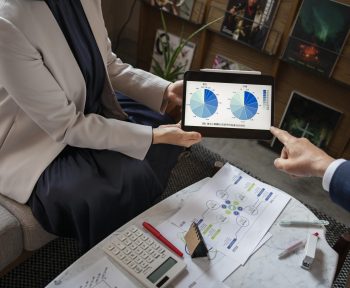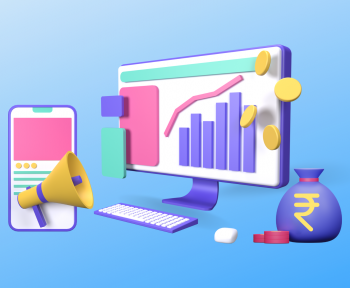The number of retail loans in India has surged from 35 million in March 2020 to 60 million by end of March 2022 as per an Equifax overview report¹. The report also highlighted that the portfolio outstanding amount jumped 25% from INR 71 billion in March 2020 to INR 89 billion in March 2022. While the growth has been promising and reassuring amidst the rising volatility in the global economic scenario, it is also indicative of the need for banks and other financial institutions to gear up for the road ahead.
The challenges include making loan collections faster, driving down the cost of operations, minimizing the non-performing loans, catering to the borrower’s expectations in communications, and adhering to the evolving regulatory norms. With ML and AI revolutionizing almost every industry, it is time for lending companies to explore the potential of innovative technologies in the previously ignored area of collections from a transformational perspective.
Post-pandemic, most lenders have scrambled to build digital and analytical capabilities. Some banks had invested early and strengthened their capabilities in sourcing and underwriting. However, there are major gaps in collection capabilities that remain unaddressed. Old-fashioned, manual, and generalized collection methods have proven to be inefficient and error-prone but continue to be the norm. The repetitive debt collections practices, applied in bulk without any consideration of the borrower’s persona, risk profile, and behavior are not just hugely expensive, but also unproductive.
Data as the game changer
Data is proving to be a game changer across industries with banking and financial services being no exception. Tech platforms with basic automation and data collection are now being used by most banks and FinTechs. Advanced data analytics and Machine Learning are providing innovative ways to identify patterns, insights, and optimized solutions. The data-backed decisioning system has helped many banks, NBFCs and FinTechs transform their loan collections approach with holistic segmentation, actionable insights, borrower behavioral indicators, and personalization strategies. This provides financial institutions the flexibility, agility, and power to manage collections more efficiently and effectively.
Tailored outreach plans
Collections is no longer only about reaching the borrowers in a physical mode. The outreach strategy now needs to be much broader, focused, and aligned to the rapidly evolving ecosystem. Tailoring the borrower outreach for different personas and creating stage-wise plans encompassing multiple channels based on all expected customer responses at each stage is a must. Banks and other financial institutions are using data to drive decision-making across the collections value chain, apart from adopting integrated tech platforms and cloud-based solutions that are readily integrable. This has proven to be cost-effective highly efficient and better at managing risk.
A debt-resolution solution based on analytics
Some strategies for developing debt collection processes based on analytics and data include:
- Borrower Risk Classification: Machine learning algorithms can more accurately predict the likelihood of borrowers’ delinquency using hundreds of input parameters. With resource constraints, calling every delinquent debtor becomes impractical, necessitating the development of a robust method for identifying the debtors that are to be contacted on priority. While calling a debtor who does not require additional persuasion is a wasted effort, failing to engage a debtor, results in further delinquency and a higher risk of non-payment. Thus, a one-size-fits-all strategy is not the best approach. A FinTech lender using the Credgenics platform adopted advanced ML models to fine-tune their reach-out strategy encompassing multiple channels. Experienced agents were assigned to communicate the appropriate messaging to high-risk borrowers on priority to enable them to close their outstanding balance. The result was that most borrowers in the high and very high-risk segment had responded to a call by the 10th day of collections and listened to the message being delivered to them about their outstanding loan amount. This improved the number of paid borrowers, as regards to those in the non-responded customers by 21%.
- Channel Prediction: Based on past communication behavior, banks and other non-banking finance companies can predict the best channel, template, language, frequency, and time to reach out to borrowers. A lot of borrowers prefer electronic interactions and ML algorithms can accurately identify their preferences. One of Credgenics’ banking customers used AI-powered Voicebots effectively to communicate with their top-of-the-funnel borrowers about payment reminders and other repayment information resulting in higher resolution rates.
- Strategy Optimization: Tracking borrowers’ real-time behavior across all channels helps create a completely personalized collections strategy and framework. Lenders can explore advanced debt recovery software solutions that use ML to understand how their borrowers react to the strategy and assess the difference that technology makes to their collections outcomes.
- Intent to Pay Prediction: This entails predicting the borrowers’ willingness to repay, based on historical data and outreach attempts to determine the tele-calling priority for the next day. Internal transaction data (loan details, credit score, income, etc.) combined with other influencers (weather, job data, GDP, micro and macroeconomic events) and behavioral influencers (voice data such as demographics and call notes) are used to predict delinquencies and develop proactive outreach strategies for high-risk customers. Using an ML-powered analytics framework, a lender can quickly understand the relationship between disparate events, such as a declining bank account balance and distressing reactions from phone or email interactions. Without the need for agent intervention, the account can then receive proactive, contextual communications.
Benefits of digital solutions
When a leading fintech using Credgenics Collections Analytics in loan collections tweaked its strategy and adopted a holistic, data-driven approach which resulted in 70% of the recovery amount collected within the first week, 25% reduction in time to collect, and 16% reduction in human calling efforts.
The adoption of advanced digital solutions has delivered higher recoveries, lower cost of collections, enhanced collection efficiencies, lower churn across digital channels, faster collections, and higher productivity of calling resources. Therefore, it is imperative for banks, NBFCs, and FinTech lenders to explore and adopt emerging best practices in digital technology and advanced analytics. This progressive and innovation-led transformation will help them stay ahead of the curve, establish new benchmarks in customer service, and raise their profitability.





